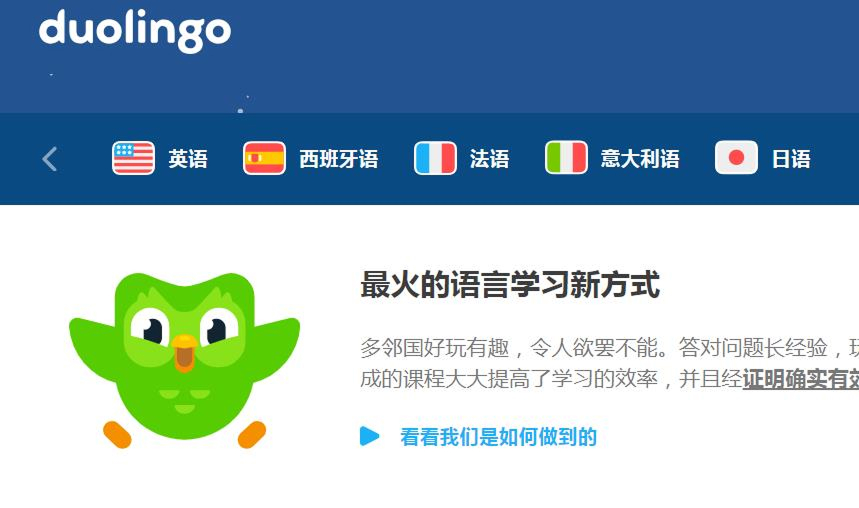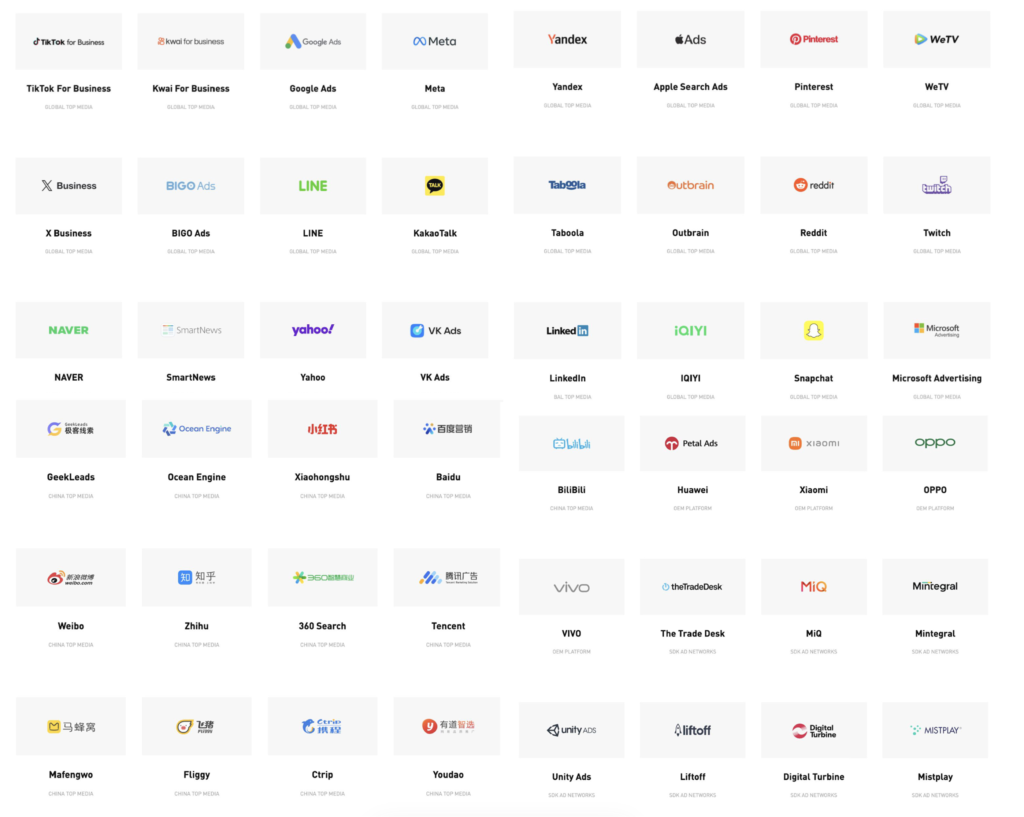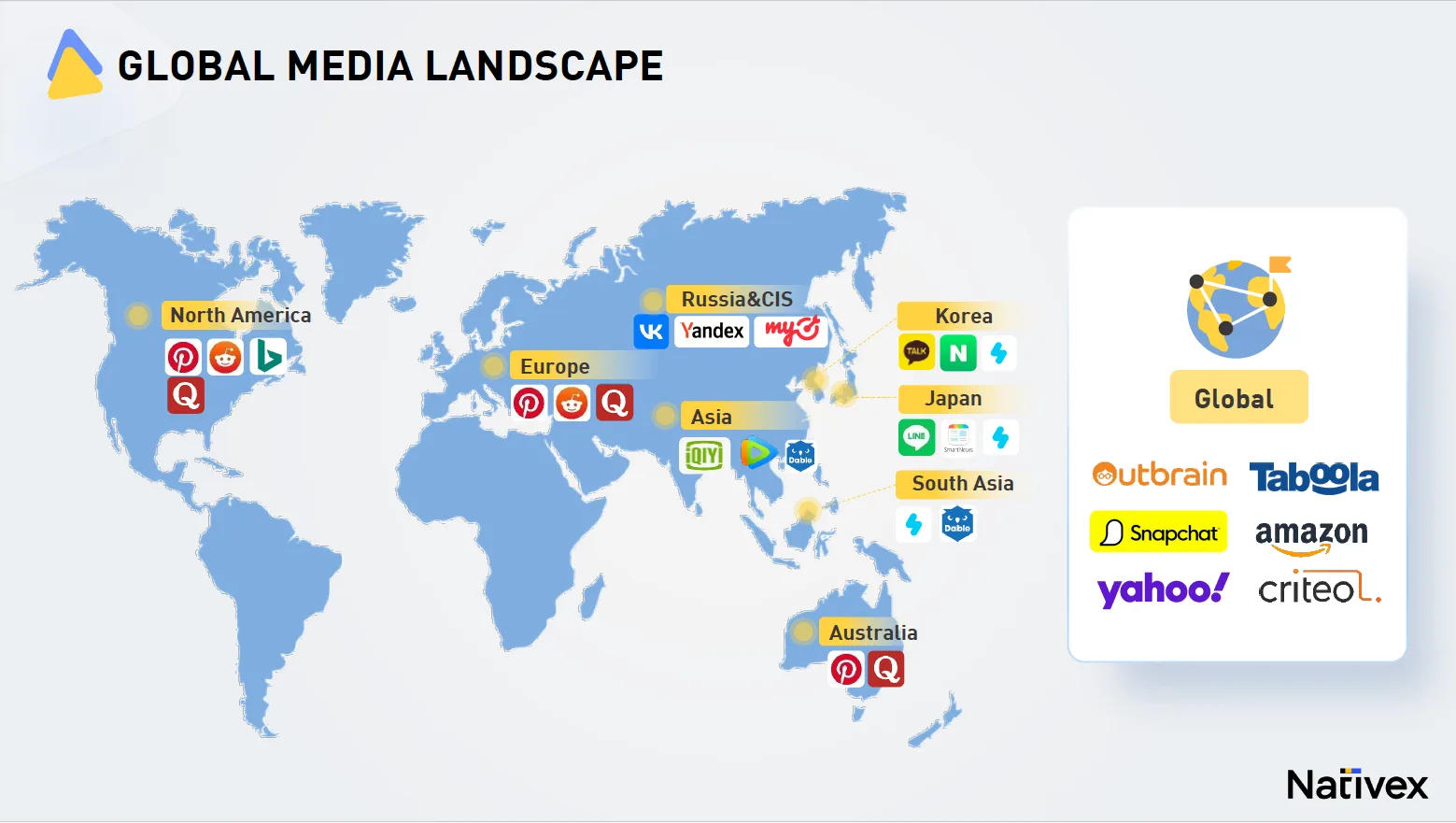Western mobile markets are crowded, competition is brutal, and many developers looking for new app growth opportunities are turning to Asia. And for all the right reasons: the region accounts for 44% of all mobile app installs, and paid UA here is growing faster than the global average.
But you can’t just throw ad budgets at your usual UA channels and leave it there—scaling applications in Asia is a totally different game.
At a recent FunnelFox webinar, our CEO Andrey Shakhtin sat down with Yolanda Huang (Director of Client Growth, Nativex) to identify the right approach to the Asian market. Yolanda shared the ad platforms that work, types of campaigns to start with, regional specifics, mistakes to avoid, and when to use web-to-app funnels vs. direct-to-app.
This article covers the key takeaways from the webinar. Read on if you’re serious about expanding into Asia.
Too big to ignore: an overview of the Asian market
Here’s a snapshot of the mobile landscape in Asia, based on AppsFlyer data from H1 2024:
- 30 billion app installs across the region
- 22% growth of paid UA, YoY
- $12.7 billion spent on UA
- 20% of global ad spend
- 44% of worldwide installs (organic + paid)
- 45% of paid installs
- up to 70% of global non-gaming installs
In 2024, non-gaming apps growth reached 31%, outpacing gaming for the first time.
So, where do you start scaling your application in Asia?
Long story short—it depends. Asia isn’t a single market but rather a complex mix of distinct ecosystems. Developers already running UA through SDK networks usually have a sense of where installs and revenue are coming from, but for those starting fresh, the key regions to evaluate are:
- Japan & Korea → High purchasing power, but require deep localization and platform adaptation
- Greater China → Huge scale, but comes with regulatory and compliance challenges
- Southeast Asia → A fast-growing, mobile-first region with strong adoption in gaming, fintech, and entertainment
Don’t treat APAC as just another geo—that’s a fast way to burn through your budget. Application scaling in Asia requires regional expertise, adapted monetization models, and a strong strategy.
Tools like SensorTower and AppMagic can help track competitors, but they don’t paint the full picture as many local ad platforms (e.g., Naver in Korea) aren’t covered in their reports. Hence, you should explore country- or region-specific platforms and tools (we’ve listed them below) to identify opportunities for app growth.
Western app scaling in Asia: how’s it going?
Some verticals scaling in APAC are edtech (think Duolingo), utilities, and health & fitness apps.
Duolingo goes local. The app isn’t just running ads in APAC—it’s actively localizing for China and adapting content and acquisition strategies to fit user behavior.

💡 Deep localization is key for competing with local alternatives.
VPNs such as NordVPN or ExpressVPN are getting popular in APAC, but not always for the reasons Western developers expect. The main drivers vary by region:
- Entertainment access. Many users don’t use VPNs for privacy but to access geo-blocked content.
- Gaming optimization. Unlike Tier-1 markets, where casual games dominate, Asian gamers are into strategy and RPG games—genres that demand low-latency connections. VPNs help reduce lag and enable faster reaction times in competitive play.
- Financial transactions. With mobile-first payments dominating in APAC, VPNs are often used for secure cross-border transactions.
That said, VPN advertising in China comes with heavy compliance challenges, and not all ad platforms allow direct promotion.
💡 Brands need to navigate regulatory restrictions and consider alternative UA strategies, like influencer partnerships.
Fitness & wellness apps like BetterMe, JustFit, and Enerjoy are also scaling fast in APAC. Success in this vertical comes down to—again—localizing content, adjusting pricing models, and offering convenient and familiar payment options.
Biggest mistakes Western developers make scaling apps in Asia
1. Copy-pasting funnels without adapting to APAC users
User behavior, pricing expectations, and payment preferences vary widely across the region. What works in Japan won’t necessarily convert in Korea or Southeast Asia. Ignoring these differences is the safe way to waste your ad budget.
2. Relying only on app store attribution and missing faster optimization opportunities
SKAN delays (24-48 hours) and missing data from local platforms can slow down campaign learning. APAC developers use web-to-app funnels to track user behavior before installation, optimize creatives, and reallocate budgets much faster—and you’ll have to if you want to compete.
3. Sending users straight to the app stores without warming them up
Many Asian apps use web funnels to engage users before installation, whether through content previews (short-drama apps) or interactive onboarding (fitness & wellness apps). Skipping this step lowers conversion rates, especially for subscription-based models.
Why web-to-app works in Asia and how to get it right
More Asian app developers are shifting toward a web-to-app to build engagement before users hit the app store, reduce attribution delays, and speed up campaign learning. The strategy is particularly effective in content-heavy verticals like short-form drama apps in China—they drive installs by selling the content, not the app itself. The flow works like this:
- A user clicks an ad teasing an intense cliffhanger moment from a short drama
- They land on a page showing the next scene, creating an urge to continue
- The CTA redirects them to the app download page, where they install to finish watching
Because these apps push out hundreds of micro-episodes, they can quickly test content appeal—if a drama isn’t performing well within three days, it’s scrapped. The web layer speeds up learning cycles and allows faster ad budget reallocation.
Wellness and fitness apps also leverage web-to-app funnels, often incorporating:
- Surveys & onboarding flows to gather data and personalize user experience
- Pricing transparency & trial offers before the app store redirect
- Alternative payment options beyond app store billing
↘ Learn how to build high-converting onboarding flows
When to use web-to-app vs. direct-to-app?
A direct-to-store funnel is usually the safest option when testing a new market. Despite all its benefits, web-to-app isn’t always the best starting point, especially in markets like China, where compliance and payment integrations require extra effort. Before committing, assess whether this approach significantly improves CR and justifies the added complexity.
However, web-to-app can be a better choice in specific cases, such as:
- Content-driven apps (e.g., short drama apps mentioned above). These often require highly customized landing pages that match ad creatives to drive engagement.
- Fast learning cycles. If rapid optimization is critical (e.g., news apps, viral content), a web-to-app funnel helps test and adjust faster.
- Apps with strong selling points. If your app has a super strong selling point, like rewarded cash-out, then you might want to have a landing page overcoming the playable scalability challenges. In this case, a funnel highlights your SP and increases install intent.
Best platforms for web-to-app
Most APAC platforms now support web-to-app conversion tracking, but some are more effective for lower-funnel campaigns:
- Best for web-to-app UA → TikTok, Kwai, Baidu (high-intent search)
- More upper-funnel, brand-driven → LINE Ads, Xiaohongshu
💡 Before fully committing to a platform, allocate a $5-10k test budget to validate creative performance, compare CPIs across regions, and optimize web-to-app conversion rates.
Looking to scale your app in new markets with web-to-app funnels? Our guide covers everything you need to know to make it work.

How is monetization different in Asia and what pitfalls should you avoid?
Unlike the US/EU, credit cards aren’t common in many Southeast Asia countries, and users often prefer e-wallets, bank transfers, and super apps like WeChat Pay or Alipay. Relying solely on App Store IAPs or Western payment solutions can hurt your conversions, so you have to integrate local payment methods:
China: WeChat Pay, Alipay
- Dominate almost all digital transactions in China
- Integrating at least one is crucial—most users have both
Southeast Asia: E-wallets & bank transfers
- Many users don’t have credit cards and rely on e-wallets and local bank transfers for online payments
- Popular providers: GrabPay, GCash (Philippines), Dana (Indonesia), TrueMoney (Thailand), Touch’n Go (Malaysia)
Japan & Korea: carrier billing, local wallets
- Japan: PayPay, Rakuten Pay, LINE Pay
- Korea: KakaoPay, Naver Pay, plus strong carrier billing adoption
For new markets, starting with iOS payments is the easiest option. It simplifies transactions and eliminates the need for immediate local integrations. Once demand is validated and the market proves viable, you can add local payment providers to improve CR and reduce App Store fees. China is the exception—you have to integrate WeChat Pay or Alipay from day one.
Top UA channels in Asia
User acquisition in APAC is geo-specific—each country has its own dominant ad platforms, search engines, and social networks. While Meta and Google are still relevant, they don’t always provide the best performance. Local platforms usually offer lower CPIs, better engagement, and higher CR. The top UA channels to start with are TikTok, Kwai, Baidu, and Xiaohongshu (RedNote).
Other channels to consider:

How to choose the right platform by market?
- Japan & Korea → TikTok, Naver, LINE Ads, Twitter (Japan-only)
- China → Baidu, Xiaohongshu, Ocean Engine (Douyin, ByteDance ecosystem)
- Southeast Asia → TikTok, Kwai, Google, Meta
Korea is an interesting case—Google and Naver split search traffic almost 50/50, making Naver a must for paid search campaigns. Meanwhile, TikTok works well in Japan but underperforms in Korea, where local platforms dominate.
Kwai: the TikTok alternative for emerging markets
Kwai is often overlooked by Western developers, but it’s a huge player in Indonesia, Brazil, and other emerging markets. The platform works similarly to TikTok but has a stronger presence in Tier-2 and Tier-3 cities.
Why Kwai is worth considering:
- Lower CPIs than TikTok
- UGC-driven influencer campaigns
- CPI-based influencer programs—brands pay based on conversions, not just views
This makes Kwai especially strong for budget-conscious UA strategies in markets where TikTok ad costs are rising.
China’s UA specifics: what you need to know
Western UA strategies don’t translate directly to China—Google, Meta, and most global ad platforms don’t operate there. Instead, app developers turn to:
- Baidu—China’s Google equivalent, perfect for search-driven UA
- Xiaohongshu—the go-to platform for lifestyle, beauty, and wellness apps
- Ocean Engine—ByteDance’s ad network, covering Douyin (China’s TikTok) and other ByteDance properties
Compliance is a major factor in China. Xiaohongshu, for example, requires verifying social accounts before allowing ads—the process takes 30-60 days. Planning UA in China be ready for long-term planning and partnerships with local agencies to navigate regulations.
Types of campaigns to start with
| Network | Campaign types | Best practices | Typical performance |
| TikTok | • In-Feed Ads • Spark Ads • TopView • Web2App campaigns | • Use native-looking content • Leverage trending sounds • Partner with local creators • A/B test different CTAs | • High volume • Lower CPIs in SEA • Strong for Gen Z audience |
| Kwai | • Feed Video Ads • Story Ads • Web2App campaigns • Livestream ads | • Short-form video focus • Local language mandatory • Strong in tier 2-3 cities • Community engagement | • Good for mass market • Lower CPIs than TikTok • Strong in Indonesia |
| Baidu | • Search Ads • Display Ads • Web2App • Native ads | • Chinese language required • Local ICP license needed • Focus on keywords • Local payment setup | • High intent traffic • Good for B2B apps • Strong in mainland China |
| Xiaohongshu (Rednote) | • In-Feed Posts • KOL campaigns • Web2App • Product cards | • Focus on lifestyle content • High-quality visuals • Authentic reviews style • Community building | • High engagement rates • Good for lifestyle apps • Strong female audience • Higher CPIs |
Wrapping up
Let’s recap the key points:
- Scaling app in Asia requires a deep understanding of local specifics and a tailored strategy. Follow the path of most successful Western apps (e.g., Duolingo, BetterMe, and NordVPN) expanding into the Asian market: they aren’t just running ads in the region but adapting pricing, payment methods, and acquisition funnels to fit local expectations.
- At the same time, competition in Asia is lower than in Western markets, and web-based scaling opportunities remain untapped. Take JustFit, for example—the leading fitness app in the region. While it’s successfully scaling direct-to-app UA, it hasn’t yet taken advantage of web funnels, which creates an opportunity for other apps to step in.
- Monetization works differently—carrier billing, e-wallets, and local payment providers perform better than card payments.
- Web-to-app approach is becoming essential in Asia, especially for content-heavy and subscription-based apps. It helps to improve attribution, drives higher intent before installation, and works around privacy limitations.
- For those looking to scale in Asia through influencer marketing, working with local agencies or platforms specializing in regional creators—such as Nativex—is often the most efficient approach.
If you’re planning to grow with high-converting web-to-app funnels—whether in Asia or worldwide—FunnelFox has you covered. With a no-code onboarding builder, accurate attribution, advanced analytics, built-in A/B testing functionality, and integration with various payment providers that ensure seamless transactions for users and higher CR for you, FunnelFox has all your app needs to scale into new markets.

Q&A on how to scale your app in Asia
What are the key UA channels in different APAC countries?
All major local platforms are listed in the picture below, except for the widely known global ones like Meta, Google, TikTok, Kwai, or SDK networks.

When should I use Kwai instead of Meta or TikTok?
TikTok remains dominant, but Kwai is a cost-effective UA channel for specific regions and creative strategies that benefit from UGC-driven performance marketing. Kwai’s traffic is more limited and primarily strong in Indonesia and Brazil, with some presence in Mexico, Colombia, Peru, and Pakistan. It’s worth considering in two key scenarios:
- Early-stage market testing. Kwai’s CPI-based UGC campaigns allow brands to quickly gauge what kind of creative resonates locally. This is especially useful for Western developers unfamiliar with APAC markets. If a campaign goes viral organically, it can lead to long-tail traffic that continues beyond the paid spend.
- Cost efficiency & bolder messaging. Meta’s rising costs make Kwai a cheaper alternative for certain geos. The platform also allows slightly more aggressive messaging, which can lead to higher CR—within reason, of course (nothing illegal or against platform policies).
What are the key cultural trends and audience differences across APAC? Any specific insights for China or other major markets?
APAC is highly fragmented, with each country having distinct user behaviors, preferences, etc. Japan is completely different from Korea, which in turn is nothing like China or Southeast Asia. Even within Southeast Asia, Singapore behaves like a Tier-1 market, Malaysia is somewhat similar, while Thailand, Vietnam, and Indonesia each have unique digital ecosystems.
India stands apart as well—many global platforms, like TikTok, are banned, forcing brands to rely on alternative regional networks.
One important cultural nuance is holiday marketing. For example, some Western brands use “Lunar New Year” to be inclusive, but this can actually backfire. It’s more effective to use the specific local name. These details may seem small, but they make a big difference.
What are the best sources or agencies for finding influencers in Asia? How do I effectively recruit and filter influencers for my app?
You can reach out to specialized agencies like Nativex. When planning an influencer campaign, consider cost variation across regions. Influencer rates in Japan are among the highest globally, even above the US and Germany. Korea, Singapore, and China fall in the mid-range, while Vietnam, Thailand, and other Southeast Asian markets are more affordable.









